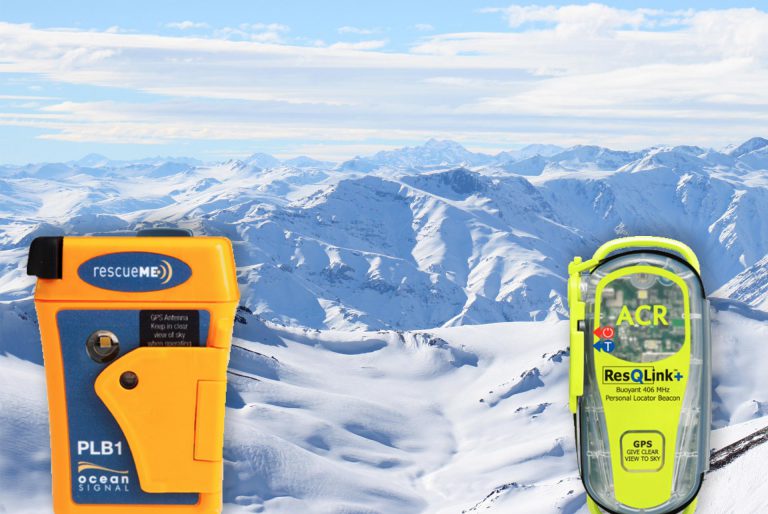 avalanche
avalanche
The Difference Between Personal Locator Beacons and Avalanche Beacons
Posted on May 14, 2018
We often get asked the question: what’s the difference between an Avalanche Beacon and an ACR 406 MHz Personal Locator Beacon? The answer essentially comes down to the fact that each beacon has 2 different jobs. The easiest way to think about this is while both beacons are designed to aid in Search and Rescue, an avalanche beacon does the Searching, while a Personal Locator Beacon brings the Rescue.
Avalanche beacons are specifically designed to locate other 457 kHz signals buried under the snow. An avalanche beacons is constantly transmitting a low powered pulsed signal during your skiing/snowboarding/snowmobiling trip and should you get caught in an avalanche, anyone in your party that is safe will switch their beacon from the transmitting mode to the receiving mode which allows use as a radio direction finder. The searchers in your party use their beacons to find your location and dig you out of the snow. Surviving the avalanche and getting out alive is the first major hurdle to overcome, but quickly your attention must turn to assessing injuries.
According to the US National Library of Medicine, the most frequent injuries are to your extremities, chest and/or spine. Getting medical attention is imperative, but can also be extremely difficult in the backcountry depending upon your location and the extent of the injuries. That is why a 406 MHz beacon or a Bivy Stick is the perfect complimentary beacon to an avalanche beacon, it calls in the cavalry.
An ACR 406 MHz Personal Locator Beacon, like the ResQLink View, utilizes the Cospas-Sarsat Search and Rescue Satellite System and provides the closest Search and Rescue Agency to your vicinity with your registration data, emergency contacts and location information. Search and Rescue (SAR) forces use the GPS position (or coordinates based on triangulation if GPS data is not available) from the beacon along with the information you provide when you properly register your beacon to immediately set out on the rescue mission. There is no subscription or activation fees with a Personal Locator Beacon, the only thing required is mandatory registration, which is what tells SAR forces who activated the beacon.
On average, 150 people worldwide lose there lives to avalanches each year. While predicting and avoiding avalanches are becoming more and more reliable, anyone in these areas is always still at risk and should be well-trained in avalanche safety. For more information and safety tips on Avalanche please check out National Ski Patrol, or find an avalanche safety course in your area.
Sources: National Geographics US National Library of Medicine